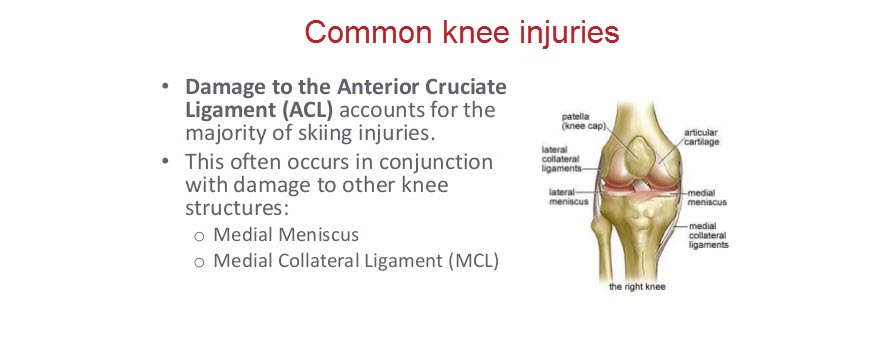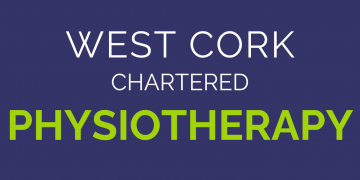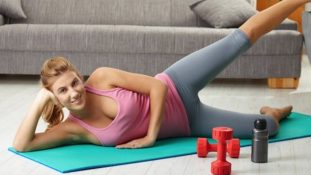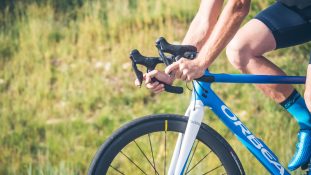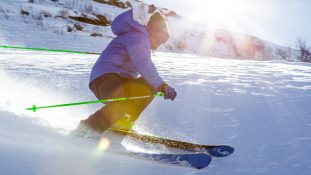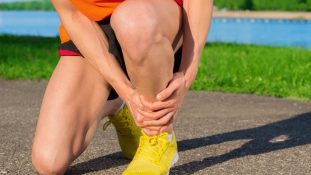Skiing is an energetic sport and it relies on muscles we do not often use, and a lot of stamina. It also requires good balance and posture. To make the most of your skiing holiday, and to minimise the chance of injury while on the slopes, here are some approved tips and exercises to get you ready in the weeks leading up to your holiday. Work on building your muscles, stamina and posture.
Build Your Skiing Muscles
Skiing relies on the legs which must be strong enough to keep a squatting position while flexible enough to move with the snow and maintain a good balance.
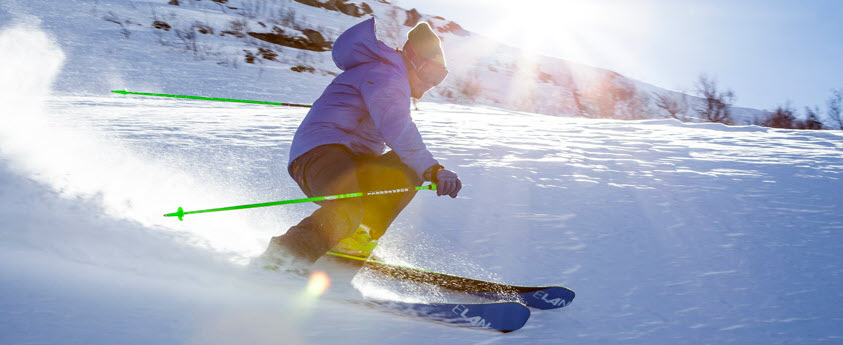
Thighs
Most important up are the quadricep (or front of thigh) muscles. Controlled lengthening of the quads from straight to bent will help to strengthen them so try stepping up and down from a low stool. Equally good is standing up and down from a squatting position. Remember to work slowly, and work the muscles until they are tired. Then take two days off so they can recover between workouts. Gradually add weights to increase the exercise. Try wearing a backpack containing tins of food.
Gluteal muscles
The lateral hip muscles, in particular the buttocks, are important to strengthen because they are seldom used except for skiing. Try lying on one side with your hips and knees bent. Keep your ankles together and lift the top knee, then lower it again, like an oyster shell opening and closing. Hips and pelvis should not rock backwards as you open the knees, and you should feel the muscles working on the upper side of the buttock. Repeat this 30 times on each side and again while standing.
Improve propulsion
Once you’ve built up strength, it’s time to practice pushing yourself into the air. Jump sideways onto a step and then off again, starting with a low step and gradually making it higher, always making sure your balance and posture are good.
Squat jumps
-
Start with your feet shoulder-width apart.
-
Squat down so your thighs are parallel to the floor, then jump high in the air.
-
Try to do several at a time with a short break to catch your breath between each set.
Lunges
-
Start with your feet together.
-
Step one leg forward and bend down so the front leg forms a right angle. Your back leg should be almost touching the floor.
-
Try to do 20 repetitions four times with a short rest in between each set.
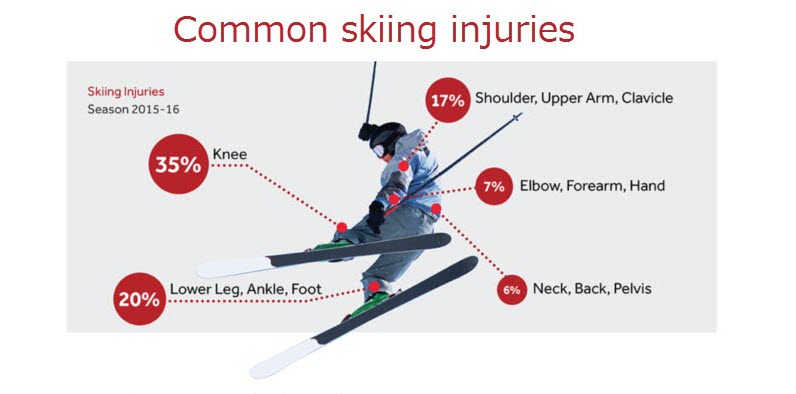
Build Your Stamina
The stronger your core, the better your leg muscles will work, and the more you exercise the better your stamina. Try the exercises above and others and push yourself to work until you are tired. Do sit-ups, squats and jumps until you are tired. And try again with weights as you improve. Cycling or using a step machine works many of the muscles used in skiing.
Pressed for time? Choose cardio workouts over lifting weights. Spin classes are ideal because they focus on the lower body, which you’ll be using more on the slopes. In the gym, cross trainers or stair machines are your best bet. If you aren’t used to exercise, try walking uphill. To build your stamina, try running hard for a short distance, and then walking back. Repeat several times.
Aim for three to four 20 to 30 minute interval training sessions a week, working harder to increase the heart rate for two minutes, then working less hard to drop it right down for a minute before doing the same again. Remember to build up the exercise slowly and incrementally. Cycling, running, cross trainers or step machines are great to build up your aerobic capacity and get those legs working at the same time, if your gym has a ‘ski trainer’ machine even better!
Strengthening your muscles using what is called eccentric training is helpful. "Eccentric training focuses on slowing down the elongation of the muscle process in order to build stronger muscles and increase the metabolic rate." In other words, exercise your weight carrying muscles slowly rather than fast. It will develop them better.
Work on Your Posture and Balance
Balance and good posture are important for skiing to minimise strain, reduce effort and improve your technique.
Proprioception
Closing your eyes when performing simple tasks can help. For example stand on one leg when you brush your teeth. “Proprioception is the ability of our joints and limbs to know where we are in space,” says Rob Madden, a snow-sports physio. “Closing your eyes helps this sense, but you can also do things like walking lunges with rotation.”
Find the perfect knee position
The knees being out of position will cause knee pain, including problems with kneecap and tendons. Check when you exercise (and when you ski) that you place your knees centrally over your feet. Visualise a vertical line dropping from your knee to the floor. It should should land in a central position between the second and third toe, not over your big toe or between your feet.
Find the perfect pelvis, hip and back position
Tuck your bottom under you as far as you can, then stick it out as far as you can. Then find a position for it that is half way between the two. This will improve balance and your muscles will work best. Practice this while mimicking skiing or snowboarding movements. Train yourself to be comfortable and familiar with this position by doing this at least 30 times a day.
Your Physiotherapist
These are just some of the tips and advice available to prepare for skiing, but we are all different and it is best to seek the advice of a physiotherapist before going skiing to plan an exercise routine that suits your state of fitness and strength.
After skiing, if you are unlucky enough to be injured, seek the help of a specialist or physiotherapist immediately. During the acute stage (the first 48-72 hours) exact diagnosis can be difficult due to the gross swelling around the joint. So it is best to seek a professional to confirm diagnosis. If the knee is swollen, apply an ice pack wrapped in a damp towel to the knee and elevate the knee whenever possible.
